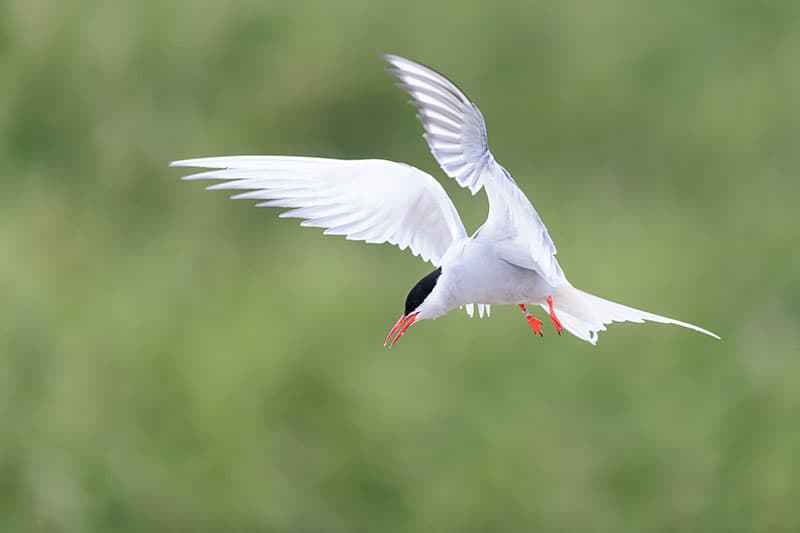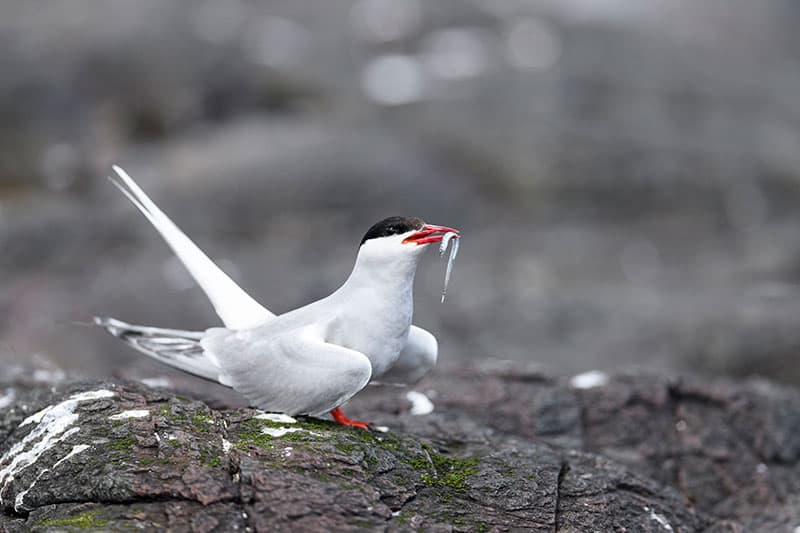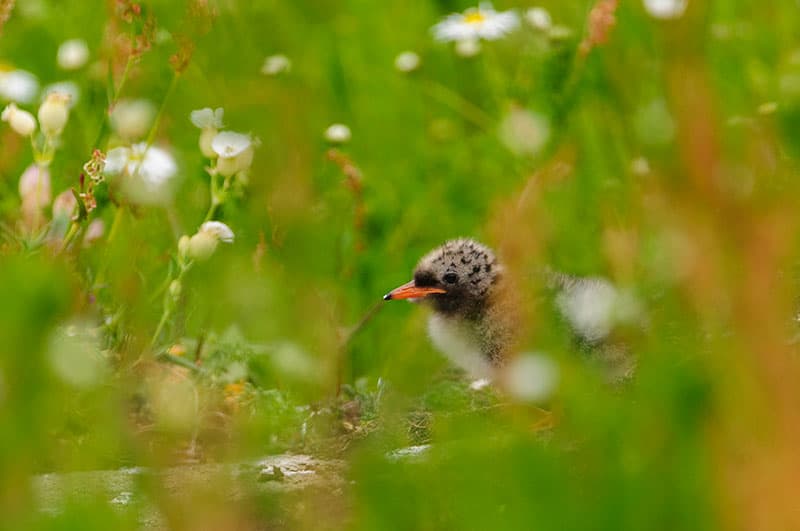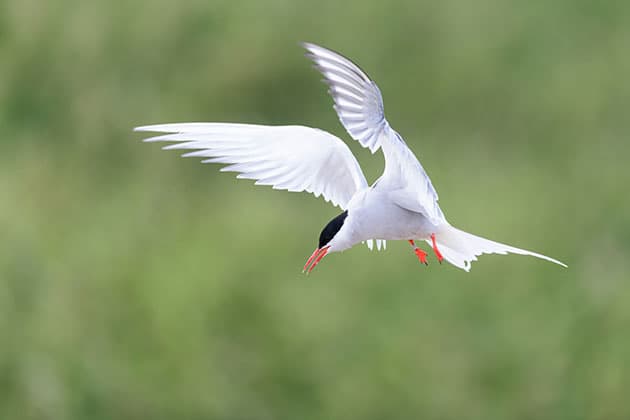
Capture them in flight as they hunt for food for their young. Nikon D850, 400mm, 1/2000sec at f/2.8, ISO 400. Credit: Oscar Dewhurst
About the arctic terns
Locally known as sea swallows, Arctic terns have the longest migrations of any species on earth. They breed at seabird colonies across the UK.
- Location Arctic terns are summer visitors to the UK, where they breed on coasts and islands around northern England and Scotland.
- Size Length 33-365cm, wingspan 75-85cm.
- Nest They breed in colonies which sometimes include other tern species. The nest itself is a depression in the ground, into which they lay mottled eggs.
- Diet Mainly fish, but also crustaceans and insects.
- Population 53,000 breeding pairs (UK).
Arctic terns are famous for their migration; they breed in the UK and Arctic, before journeying south to the Antarctic to spend the winter. Their preference to avoid flying into the wind means their route is often circuitous, and birds fitted with tracking devices have been found to travel up to 96,000km in one migration – a distance longer than any other migratory species on record. Extrapolating the average migration distance across a bird’s lifetime (the life expectancy of an Arctic tern is 30 years) means one bird could travel 1.5 million miles during its life – the equivalent of more than three round trips to the moon and back.
Arctic terns mate for life and tend to return to the same colony each year. The best chance to see and photograph them is during the summer, when they nest at seabird colonies such as the Farne Islands or on the northern Isles of Scotland. Although they can be seen on migration in spring at inland reservoirs and off the coast in autumn as they head south, they are often distant, so your best option is to visit a breeding colony. There are several good ones dotted around the UK’s coasts, although most are in the northern parts of the country, such as the Farne Islands, Cemlyn Bay, and on the islands of Shetland and Orkney.

Photograph Arctic terns in overcast light to avoid losing highlight detail. Nikon D850, 400mm, 1/2500sec at f/2.8, ISO 400. Credit: Oscar Dewhurst
Shooting advice
Word of warning
When photographing Arctic terns at a breeding colony, you will be confined to a footpath and will quickly discover that the birds will not be pleased to see you. They will harass you continuously if they feel you are too near, so there are two approaches you can take: either walk through the colony taking very brief pauses to grab images, or go towards the periphery of the colony where they won’t perceive you as a threat. Despite their aggressive behaviour, they will still let you get close enough for images. The birds will be expending enough energy trying to raise their chicks and defend against genuine predators such as large gulls, so try to minimise your impact on them.
Time of day
Arctic terns are predominantly black and white so exposure can be tricky, particularly during harsh light. An unfortunate aspect of seabird colonies is that you are often only allowed access during the middle of the day, when the sun is high, and it is easy to lose detail in shadows and highlights. If you can, try to visit colonies where you can stay overnight, such as ones in the Scottish Isles. I tend to stick to manual exposure for birds with such contrasting plumage, rst taking a reading off a neutral area, such as vegetation or the rock.
Types of images
There is lots of potential for images at Arctic tern colonies – ranging from adults in flight with sh for the chicks, to chicks hiding in vegetation, adults attacking predators such as large gulls, and portraits of the birds as they perch around the colony. Take lenses with a variety of focal lengths to give you the best chance of capturing a range of photographs.

Chick left unattended while parents hunt for food. Nikon D300S, 200-400mm, 1/1600sec at f/4, ISO 400. Credit: Oscar Dewhurst
Kit list
- Hat Arctic terns are very aggressive when defending their nest or young, and will dive-bomb any intruders, jabbing them with the tip of their beak. This technique is used to repel predators such as polar bears in the Arctic. So take a hat when visiting an Arctic tern colony as they tend to go for the tops of people’s heads, and are very capable of drawing blood.
- Binoculars If I’m photographing wildlife, I never leave home without my binoculars. They are much lighter and clearer to look through than a camera, so make finding the wildlife so much easier. They’re also great for when you want to put the camera down and just watch.







